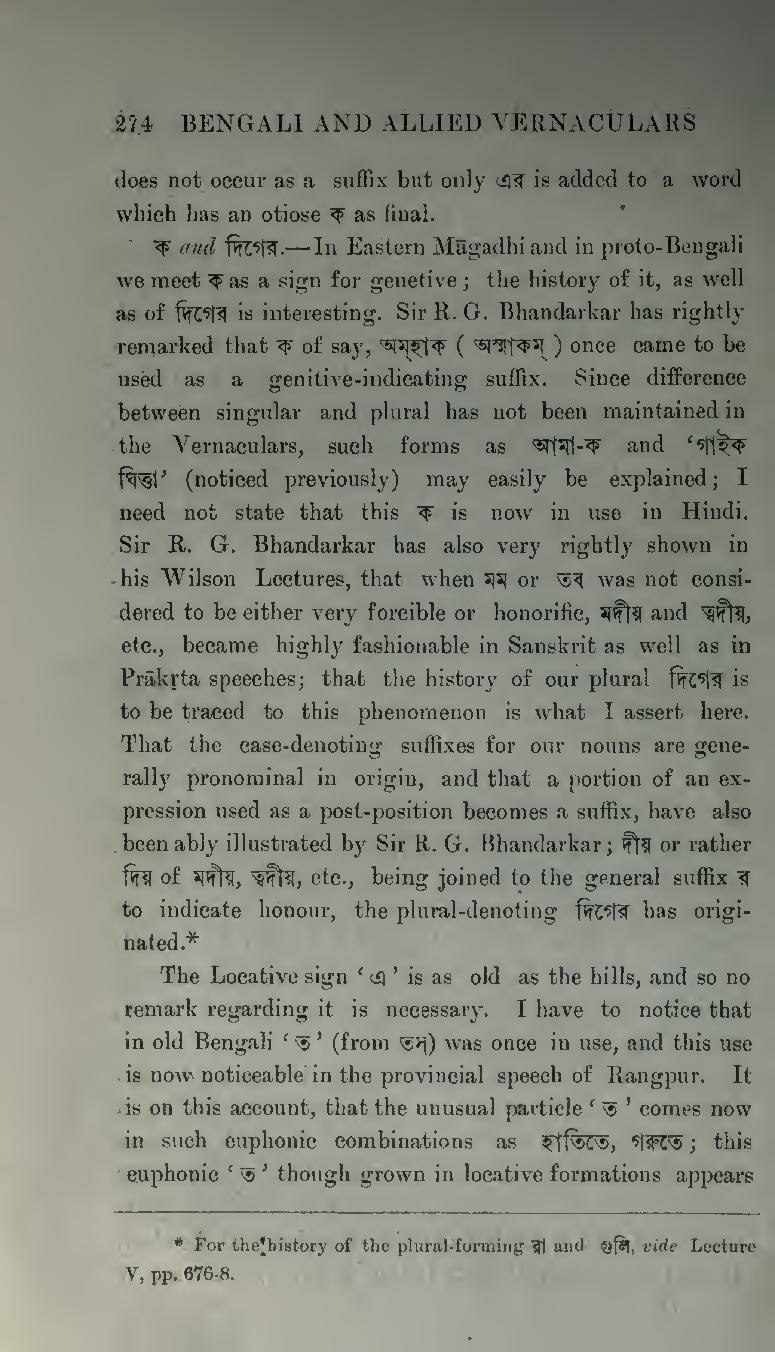does not occur as a suffix but only এর is added to a word which has an otiose ক as final.
ক and দিগের.—In Eastern Māgadhi and in proto-Bengali we meet ক as a sign for genetive; the history of it, as well as of দিগের is interesting. Sir R. G. Bhandarkar has rightly remarked that ক of say, অম্হাক (অস্মাকম্) once came to be used as a genitive-indicating suffix. Since difference between singular and plural has not been maintained in the Vernaculars, such forms as আমা-ক and 'গাইক ঘিত্তা' (noticed previously) may easily be explained; I need not state that this ক is now in use in Hindi. Sir R. G. Bhandarkar has also very rightly shown in his Wilson Lectures, that when মম or তব was not considered to be either very forcible or honorific, মদীয় and ত্বদীয়, etc., became highly fashionable in Sanskrit as well as in Prākṛta speeches; that the history of our plural দিগের is to be traced to this phenomenon is what I assert here. That the case-denoting suffixes for our nouns are generally pronominal in origin, and that a portion of an expression used as a post-position becomes a suffix, have also been ably illustrated by Sir R. G. Bhandarkar; দীয় or rather দিয় of মদীয়, ত্বদীয়, etc., being joined to the general suffix র to indicate honour, the plural-denoting দিগের has originated.[1]
The Locative sign 'এ' is as old as the hills, and so no remark regarding it is necessary. I have to notice that in old Bengali 'ত' (from তস্) was once in use, and this use is now noticeable in the provincial speech of Rangpur. It is on this account, that the unusual particle 'ত' comes now in such euphonic combinations as হাতিতে, গরুতে; this euphonic 'ত' though grown in locative formations appears
- ↑ For the history of the plural-forming রা and গুলি, vide Lecture V, pp. 676-8.
